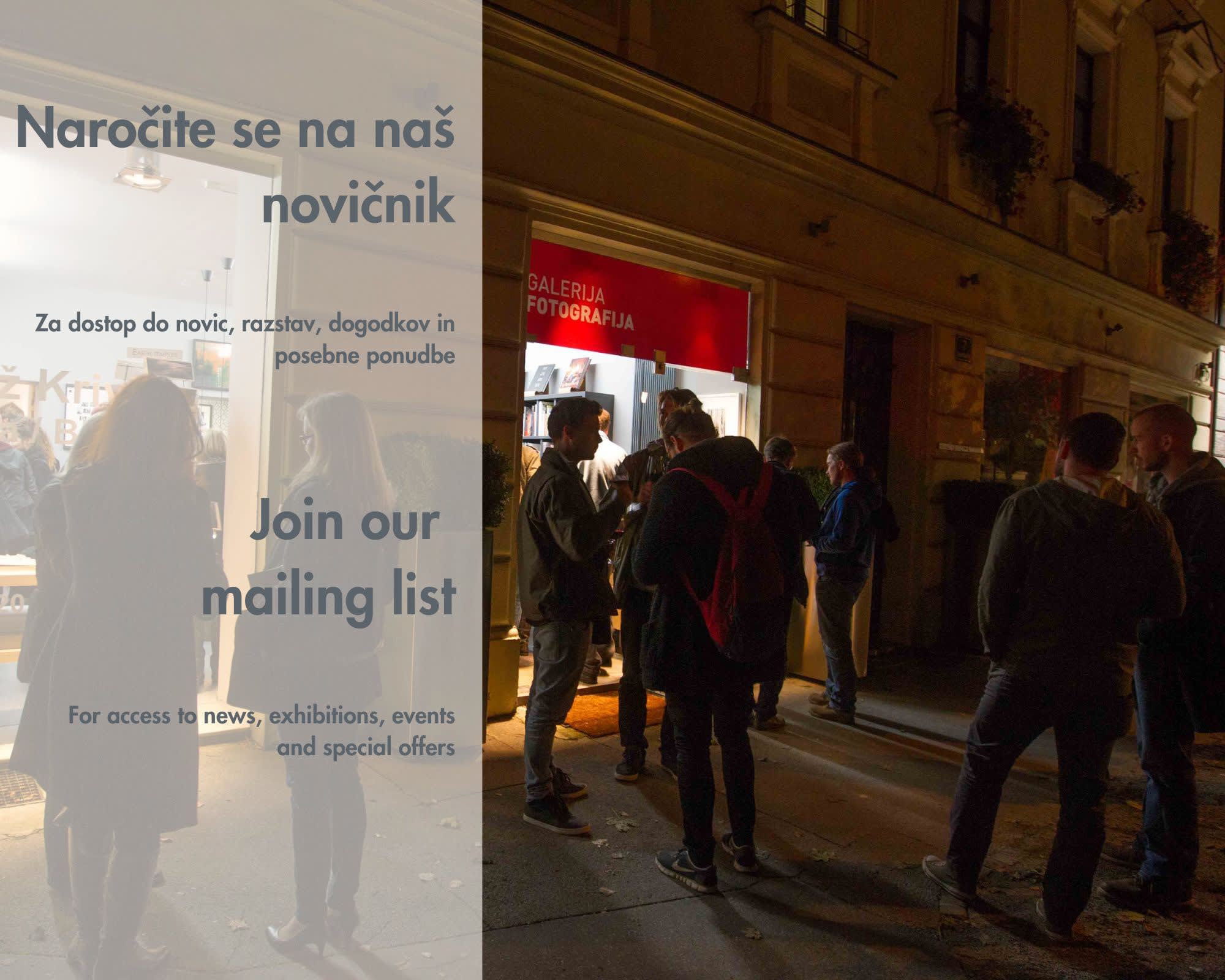Nataša Segulin : Lumen
Nataša Segulin began her work in photography following her retirement. Prior to that she had continuous exposure to visual art, as she was a journalist and editor of the cultural programme on television. She soon began to exhibit her work and it’s no surprise that her fourth series Lumen thrust her, with the same confidence and curiosity, into a new form of creativity – the »writing« of a photobook. Despite its long tradition, the photobook has been through a true renaissance in the past decade. The term describes a book in which the photographs are the only constituting element of narration. It is not only about a sequencing of photographs, but rather about providing a wholesome narrative through images.
When first viewing the photographs of the Lumen series, the eye unused to visual reading enters a place of shadows, darkness and decay. However, the artist’s story of a crumbling, centuries-old complex[1] is read in another way. The story is simple. We follow the protagonist, natural light, in three chapters, as it slowly unveils and deglamourizes. In the first chapter, protruding slants of light are unravelling miniscule details and creating mystical, dream-like images. We could be anywhere. Then, Lumen takes us into the tangible, but is entirely subordinate to geometry. Only in the third chapter is the exhausted body of a former maternity hospital illuminated, the walls stripped off to recognition. It is unforgiving, unmasking the misery, but bringing hope, light and warmth at the same time.
The aesthetic of the atmosphere is an important part of the tale. In the tradition of abstract photography, the real pictorial space is eliminated. She focuses on the use of light and shape, colour, texture and tonality, and through them expresses feelings, sensations and impressions. The deteriorating, ugly, depressing reality disappears under the warmth of light, rich contrasts between dark and light, the softness of shadows, haptic drawing of structures, the rhythm of recurring shapes and the muted, monochrome colour palette, which emphasizes beauty and harmony.
The artist’s visual narrative is and is not a story of a building. It is a testimony of an eye that reads visually wherever it turns. A true constant in her work are the language of balance, harmonious and minimalistic, the clarity, rhythm or repetition of simple archetypical shapes, the tangibility of textures and vivid contrasts between light and shadow. Just as the feelings of peace, quiet and harmony which she places in the former Servite monastery, in the hopes of a bright future.
Every artistic series speaks of the author themselves. With Nataša Segulin, we are always in spaces which are somehow remote, even though they’re bustling with people at the same time (the port of Koper, quarries, tourist destinations with cultural heritage value). The cause for the tale of lumen is a love for art and cultural heritage, a personal involvement in a physical space, the city of Koper, and the artist’s own emotions related to the building, from which the name of the series evolves. »Lumen as light, radiance, and the happiness and joy accompanying the birth of so many Primorska and Istria residents, I was born here, as was my family… light as hope for a better tomorrow.« Her positive credo is recognized as part of her photographic expression and although she is mainly concerned with formalist aspects of her photography, she tried, in her newest series, to affect a change in the collective social consciousness. If we look at Sartre’s definition of engaged literature, which states that »literature reveals to the reader their own situation, for them to take responsibility for it«, then in terms of defining an artistic style, her engaged poetic questioning of society’s attitudes toward heritage as one of the key elements of national identity has, in the case of Lumen, crossed the threshold of contemporary art.
Renata Štebih, art historian
[1] The Servite monastery in Koper’s old town is a building with the status of a cultural monument of national importance. It is one of the oldest complexes in the city and a superb architectural example of its era and of the style common all along the eastern Adriatic coast. The location, taken and inhabited by the Servites in 1453, has been inhabited already in Roman times. A Benedictine monastery with the church of St. Martin used to stand in its place. The monastery was used for different purposes through the centuries, including a military hospital. Since 1810 and until the second world war, a general city hospital was based there, but after the war and until 1996, a regional maternity hospital and paediatric department were based in the building. When the maternity hospital moved out in 1996, the former monastery spaces with its countless stories of the past, became empty. The interior is decaying, collapsing in on itself and has been waiting on renovation and revitalization for years. (After Neža Čebron Lipovec and Minka Osojnik, 2017: Stavbna zgodovina samostanske zgradbe / Storia della costruzione del convento. IN: Servitski samostan, Arhitekturni in arheološki spomenik v osrčju Kopra / Il convento dei serviti, Un monumento architettonico e archeologico nel cuore di Capodistria, ed. Neža Čebron Lipovec et al., Milano: Politecnico di Milano).






